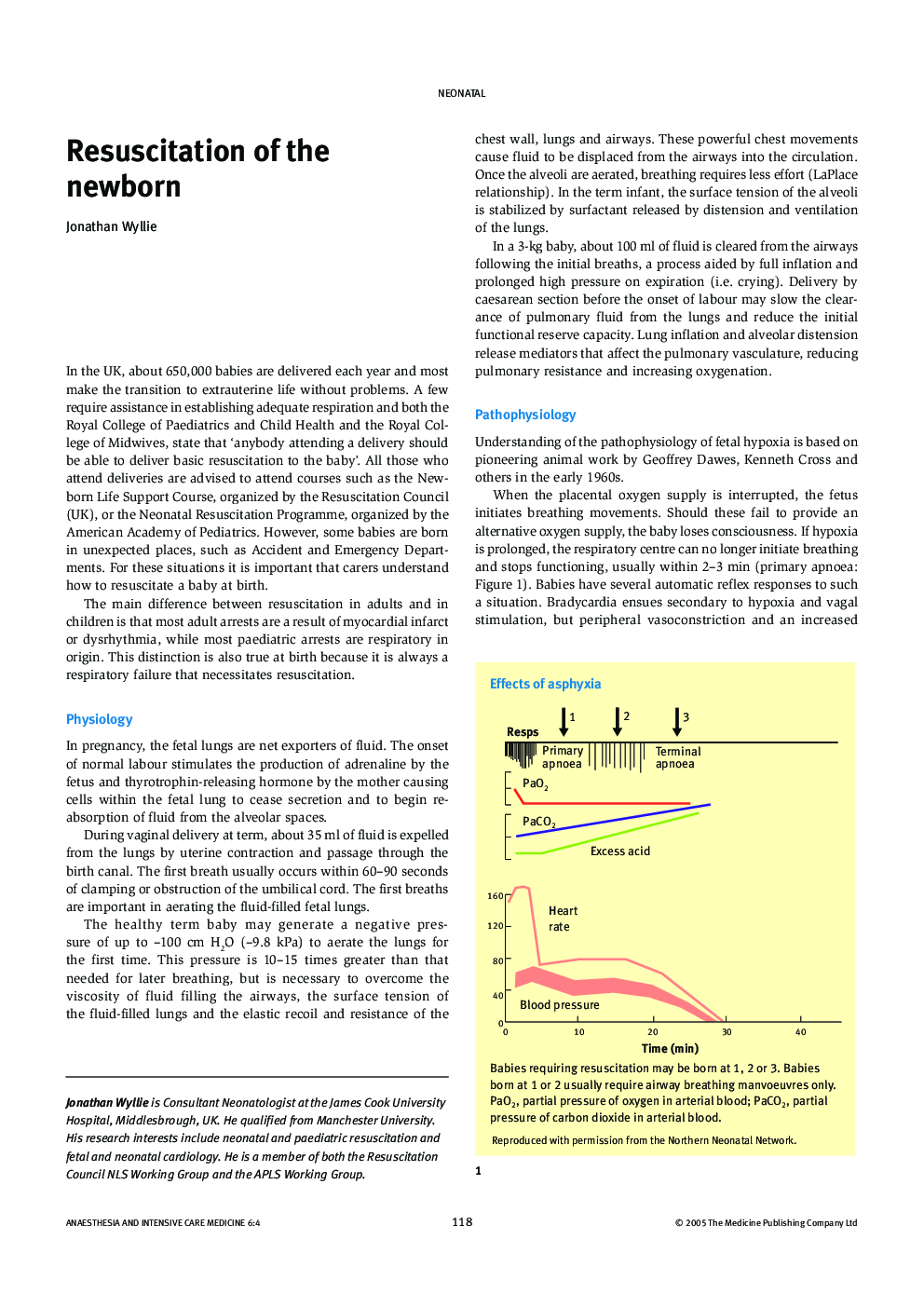| Article ID | Journal | Published Year | Pages | File Type |
|---|---|---|---|---|
| 9089643 | Anaesthesia & Intensive Care Medicine | 2005 | 5 Pages |
Abstract
The resuscitation of babies at birth is different from the resuscitation of all other age groups and knowledge of the relevant physiology and pathophysiology is essential. However, most newly born babies establish normal respiration and circulation without help. Ideally, someone trained in newborn resuscitation should be present at all deliveries. It is advised that all those who attend deliveries go on courses such as the Newborn Life Support Course, organized by the Resuscitation Council (UK) or the Neonatal Resuscitation Programme, organized by the American Academy of Pediatrics. However, some babies are born in unexpected places such as accident and emergency departments. For these situations it is important that carers have an understanding of the differences in resuscitating a baby at birth compared with older patients. This article outlines the differences in physiology and the approach to resuscitation. It describes a stepwise approach to assessing and resuscitating babies at birth. It also deals with the few special situations, such as prematurity and meconium. It emphasizes similarities leading to a standard Airway Breathing Circulation approach with the initial additions of assessment and temperature control.
Related Topics
Health Sciences
Medicine and Dentistry
Anesthesiology and Pain Medicine
Authors
Jonathan Wyllie,
